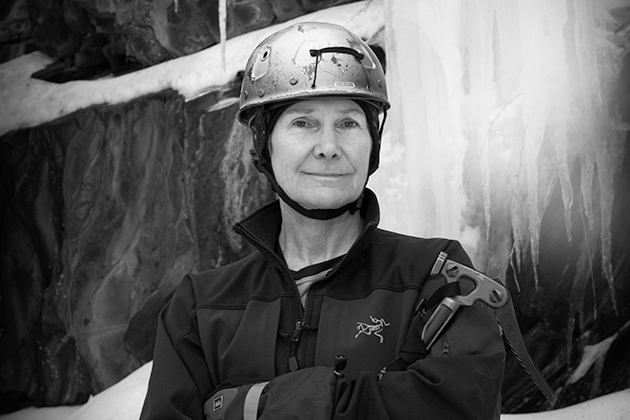
By Carol Masheter ’83 MA, ’88 Ph.D.
Carol Masheter ’83 MA, ’88 Ph.D. has been to the tops of the world. Last year, she became the world’s oldest woman, at age 65, to reach the top of every one of the highest mountains on each of the seven continents, known as the Seven Summits, plus Carstensz Pyramid in Papua, Indonesia. Despite her fear of heights and longtime battle with anxiety, Masheter decided to take on high-altitude mountaineering starting at age 50, in her struggle to overcome the grief and distress of losing her job, her long-term relationship, and her mother – all within 18 months of one another.
A crowd of reporters and friends greeted me as I trotted down the stairs to the baggage claim area of the Salt Lake City International Airport. I was returning from Australia, where I had summited the last of the Seven Summits, becoming the oldest woman in the world to have climbed the highest peak on each continent. The fatigue of travel evaporated as friends hugged and congratulated me, and reporters crowded around to ask questions.
When I first learned about the Seven Summits in my early 40s, they seemed beyond reach – too difficult, too far away, too expensive. Besides, I was busy launching my second career as a university professor. But when my life fell apart at age 50, I headed to the Bolivian Andes to heal and discovered that I was a pretty decent mountaineer.
One climb led to another; I gained skills and experience. By the time I had reached age 60, I was climbing Aconcagua, the highest peak in South America, in memory of my dad, who had died of his second heart attack at the same age.
A year and a half later, I was climbing Everest – a 10-week expedition.
The World’s Tallest Mountain
For several of those weeks, I lived alongside my fellow climbers at Base Camp. There, our cluster of tents were pitched amidst a jumble of ice formations, gray rock, and boulders near the base of the Khumbu Icefall, a dramatic tumble of giant ice blocks and crevasses 1,800 feet high.
Occasionally, icebergs calved and crashed into a frozen lake behind my tent, while the glacier beneath us moaned and shifted like a restless beast under my sleeping bag. Every avalanche cracked with sounds of doom, certain to roar through Base Camp and kill us all.
As we ascended week by week, camp by camp, our bodies adapted to higher elevations, and Everest’s summit got closer. The night we started our summit attempt, I squinted in the dark at the thermometer on my pack. It read minus 15 degrees Fahrenheit, warm by Everest standards. I felt lucky, even as my face turned numb.
Several times as I labored up rugged, steep terrain, I smelled frying bacon. I was puzzled; no one would be frying bacon at an elevation above 27,000 feet. Slowly, a memory rose through my altitude-fogged mind. I had experienced a similar olfactory hallucination about 15 years ago during another demanding event, a 26-hour, 76-mile hike through central Utah. I realized I wasn’t losing my mind, just hallucinating.
After many challenges and setbacks, I stood on Everest’s peak. The view from the top was magical, one that documentaries and photos do not fully capture; far below me, many of the world’s highest mountaintops floated like enchanted islands in a sea of clouds. I could have been on the summit 10 minutes or 30 years. I could not say. Time stood still.
Taking the Next Step
People often ask why I climb. The otherworldly beauty atop the highest peaks is one reason. In the mountains, I feel centered, focused, fully alive. And I have learned so much from mountaineering – from breaking big problems into small, doable steps to realizing that perceived enemies can be one’s closest allies.
Each mountain has its own challenges. On Everest, acclimatizing to the thin, cold air takes weeks of climbing up and down the mountain. Though Denali in Alaska is nearly 9,000 feet lower than Everest, there are no porters or yaks to help climbers carry gear. On Vinson Massif in Antarctica, extreme cold, exacerbated by wind, is the main danger. People have gotten lost and died in snowstorms even on Mount Kosciuszko in Australia, the lowest of the Seven.
I treat each climb as though it is my last. Now age 66, I see each climb as a gift. I plan to climb as long as I enjoy it and am not putting my fellow climbers at unnecessary risk. But taking the next step is always what is most important.
If you have an unfulfilled dream of your own, whether it is climbing the Seven Summits or just getting into better shape, come up with a workable plan. Then do something, no matter how small, toward making that dream happen. It might be as simple as making a phone call. Keep in mind, after all, that the second hardest thing is to start. The first hardest is to keep going.






